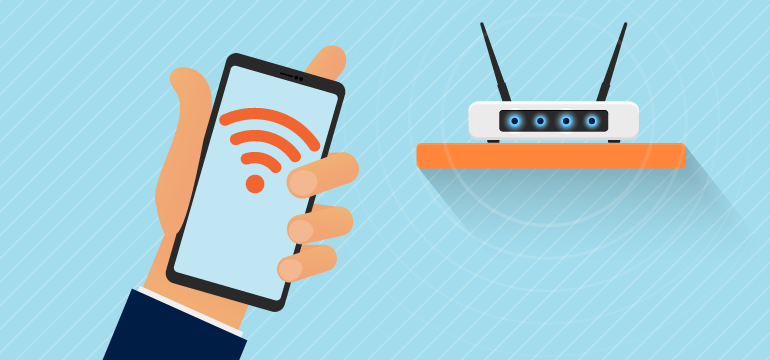IoT (Internet of Things) is pretty common nowadays and many people are already aware of its benefits.
The Internet of Things (IoT) refers to devices that connect to the web, allowing them to communicate with each other and share information through the cloud. These smart gadgets allow businesses to monitor their operations remotely, improving efficiency and cutting costs.
But do you know if IoT testing should take place before or after deployment? How should you go about performing IoT testing?
A good rule of thumb is to perform IoT testing when you are ready to deploy an IoT solution into production or at least after the initial release. There may be some bugs that need to be resolved before deployment, but there also might not be any issues to resolve. If the device works as expected during development, then there should be no reason to worry about performing IoT testing on it until it goes live.
There are two types of testing, functional test and security test. Functional testing checks if an IoT device works correctly and performs its functions. Security testing ensures that IoT devices offer the highest level of protection for their users. You should perform both tests when you’re ready to deploy the IoT product or service.
Before deploying the IoT solution, companies should perform extensive tests to ensure the security and reliability of the system. In addition, they should also evaluate whether the implementation meets user expectations.

Source: testgrid.io
But, do they need to do that once, or a few times during the process?
How often should I perform IoT testing?
IoT (Internet of Things) refers to a network of connected devices such as smartphones, smartwatches, fitness trackers, thermostats, and refrigerators. These devices connect to each other using wireless technologies like Bluetooth or Wi-Fi. They allow us to control our homes remotely without having to physically go into them.
There are various types of IoT testing, ranging from basic tests to advanced ones. The main purpose of these tests is to ensure the security of the whole system. This helps us prevent data breaches and other threats.
What should you test before rolling out your new IoT device into production?
The good news is that you don’t need to wait until the last minute to perform these tests. In fact, regular testing can significantly reduce your risk of introducing costly errors.
This will also help you:
- To determine if your product meets its specifications
- To ensure that the product functions properly at all times
- To identify problems early on in the development process
- To gain insight into the user experience
- To gather information about the market demand for your products
A few tips on how to perform IoT testing

Source: hologram.io
In order to make sure everything works fine, you have to focus on a few aspects while you test the product. You need to learn the different types of IoT testing and look for a solution you can view it now.
In general, here are the main things you need to focus on:
1. Understand the automation testing
Automation testing is the process of simulating real user scenarios in order to simulate how users interact with devices. In other words, IoT test automation involves automating manual tasks so that they are performed by software instead. These automated processes help reduce human error by making sure that products function properly before being released into the market.
2. Check on the cloud data access
IoT testing is essential for ensuring that an internet-connected device works correctly when connected to the cloud (i.e., Amazon Web Services) and has access to data.
3. See if the system works fine offline and online
During the development phase, it’s important to perform IoT testing to ensure that a product functions correctly, regardless of whether it is connected to the Internet.
4. Have both WiFi and cellular data connection
Make sure to test your device using both its WiFi and cellular connections. If you find a difference between the two results, then you may need to perform troubleshooting.

Source: consumercellular.com
Report the issue to the development team, so they can resolve it on time before you take the testing to the next stage.
Why should we automate IoT testing?
Automated IoT tests save time and money. They improve efficiency and productivity by reducing the time required to write, debug, and deploy code.
Additionally, automated IoT testing eliminates errors caused by human mistakes. Humans aren’t perfect, which means that things will go wrong sometimes. By using automated tests, developers can catch problems early and prevent them from going undetected.
Here are some of the benefits of automated testing:
- To avoid downtime during production, testing should start as soon as possible after launch (ideally 6 months before)
- To ensure everything works together correctly – Test at multiple locations – ideally in different regions of the country
- To confirm connectivity between devices – Test using all available access points such as cellular, WiFi, Bluetooth, etc.
- To confirm interoperability between IoT devices – Test using common protocols and services
- To identify problems and prevent issues from occurring – Test at different times of day when usage patterns are expected
- To test compatibility with other products including hardware, software, firmware, operating systems
All these things lead us to the conclusion that even beginners should adopt the automated way of testing IoT solutions.
Conclusion

Source: simplilearn.com
As with any new technology, we recommend testing IoT solutions in small batches first. This gives you time to make sure your solution works as expected and allows you to monitor issues before committing to a large-scale rollout. You must understand what you are doing, and determine if it’s worth running a test on a particular device or system. Once you’re finished, it’s important to let others know what you did and how it went.
This article provides some insights into how IoT devices work, and the different ways users interact with them. It also explains why IoT testing is so critical. Finally, it offers suggestions for what to expect when conducting your own tests.
We hope it was helpful for you, to understand the processes of IoT testing and why it’s important.




